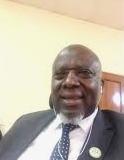A Measurement Model of University Students’ Self-reported Perceptions of Internet Use for Learning
DOI:
https://doi.org/10.53449/ije.v1i1.35Keywords:
collaborative learning, learner engagement, measurement model, structural equation modelingAbstract
With the increased popularity of the Internet for instructional purposes in the recent years, learners can now ably build a positive attitude towards its use in their learning activities through constant interaction with various information technologies. The purpose of this study was three-fold: to examine the extent to which students’ self-reported perceptions of Internet use constituted meaningful and interpretable dimensions of the Internet use in learning construct; to test the construct adequacy in terms of its validity and reliability; and establish if the measurement model is an adequate measure of Internet use for learning across levels of internet knowledge. The sample consisted of 258 undergraduates from six faculties of Islamic University in Uganda. The data were collected using a self-reported 16-item questionnaire that measured undergraduate students’ perceptions on Internet use for learning and analysed using Structural Equation Modeling and Confirmatory Factor Analysis with AMOS software version 22.0. The study findings reveal that students’ Internet use for learning is a valid and reliable multidimensional construct with AVEs>0.5, shared variance <0.5 and composite and Cronbach Alpha >0.7; and the measurement is Internet knowledge-invariant with chi-square change p>05. The results supported and extended the results of previous work on students’ perceptions about internet use for learning. The findings are useful for evidence-based decision making regarding the integration of internet applications in student learning activities, and in enhancing future research in the domain of Internet use and pedagogy.
Downloads
References
Anderson, S. (2006). The evolution of higher education in China: Storied experiences of Internet usage by students and faculty. University of Houston.
Aqil, M., Parvez, A. (2011). Use of the Internet by research scholars and post-graduate students of the Science Faculty of Aligarh Muslim University Library Philosophy and Practice, 538(June).
Arthur, C., & Brafi, P. O. (2013). Internet Use among students in tertiary institutions in the Sunyani Municipality , Ghana. Library Philosophy and Practice, 859(February).
Bankole, O. M. (2012). Internet use among undergraduate students of Olabisi Onabanjo University, Ago Iwoye, Nigeria. Library Philosophy and Practice, 812(May).
Chen, B., & Bryer, T. (2012). Investigating instructional strategies for using Social Media in formal and informal learning. The International Review of Research in Open and Distance Learning, 13(July 2011), 18.
Downes, S. (2005). Connectivism: A learning theory of the digital age. International Journal of Instructional Technology and Distance Learning, 2(1).
Duke, B., Harper, G., & Johnston, M. (2010). Connectivism as a digital age learning theory. The International HETL Review, (1966), 4–13.
European Commission. (2014). Modernisation of higher education. Luxembourg.
Gagan, S., & Rakesh, P. (2013). Use of internet for research and educational activities by research scholars : a study of D . S . B . Campus of Kumaun. International Journal of Engineering and Manufacturing, 4(2), 193–199.
Geyer, R. W. (2009). Developing the Internet-Savviness (IS) scale: Investigating the relationships between Internet use and academically talented middle school youth. RMLE Online: Research in Middle Level Education, 32(5), 1–20.
Gialamas, V., Nikolopoulou, K., & Koutromanos, G. (2013). Computers & education student teachers’ perceptions about the impact of internet usage on their learning and jobs. Computers & Education, 62, 1–7.
Hair, J. F., Black, W. C., Babin, B. J., & Anderson, R. E. (2016). Multivariate data analysis. New York: Macmillan.
Hart, B. J. (2008). Understanding today’s learner. The E-Learnig Guild, 1–13.
Hrastinski, S. (2009). A theory of online learning as online participation. Computers and Education, 52(1), 78–82.
Ivwighreghweta, O., & Igere, M. A. (2014). Impact of the Internet on academic performance of students in tertiary institutions in Nigeria. Journal of Information and Knowledge Management, 5(2), 47–56.
Kabilan, M. K., & Rajab, B. M. (2010). The utilisation of the Internet by Palestinian English language teachers focusing on uses, practices and barriers and overall contribution to professional development. International Journal of Education & Development Using Information & Communication Technology, 6(3), 56–72.
Kuh, G.D.; Kinzie, J.; Cruce, T.; Shoup, R.; Gonyea, R. (2007). Connecting the dots: Multi-Faceted analyses of the relationships between student engagement results from the NSSE, and the institutional practices and conditions that foster student success (Vol. 43).
National Survey of Student Engagement. (2012). Promoting student learning and institutional improvement: Lessons from NSSE at 13. National Survey of Student Engagement, 50.
Nelson, K. J. (2008). Teaching in the digital age: Using the Internet to increase student engagement and understanding (2nd ed.). California: Paul Chapman Publishing.
Palaigeorgiou, G. Grammatikopoulou, A. (2016). Benefits, barriers and prerequisites for Web 2.0 learning activities in the classroom. Interactive Technology and Smart Education, 13(1), 2–18.
Pallant, J. (2007). SPSS survival manual. Sydney: Allen & Unwin.
Prabhavathi, D., Padmavathi, S., & Visvavidyalayam, M. (2013). The value of IT in university library for teaching, research and learning process : A case study of Sri Padmavathi Mahila Visvavidyalayam ( SPMVV ) University in India. International Journal of Library and Information Science, 5(January), 14–19.
Ramzan, S & Irfan, M. (2016). Internet information for social science research among Punjab students; A case study of Malerkotla. International Research Journal of Human Resources and Social Sciences, 3(5), 195–209.
Sanni, M. (2009). Harnessing the potentials of Internet technology for research and development among undergraduates in Nigeria : A case study of. International Journal, 3(1), 10–17.
Sudiran. (2015). Students’ perception towards the use of Internet as learning media to promote reading comprehension skill. Sino-US English Teaching, 12(9), 684–692.
Tekinarslan, E. (2009). Turkish university students’ perceptions of the World Wide Web as a learning tool : An investigation based on gender, socio-economic background, and Web experience. The International Review of Research in Open and Distributed Learning, 10(2), 1–19.
Thanuskodi, S. (2010). Use of Internet and electronic resources for medical science information : A case study. Journal Media of Communication, 1(1), 37–44.
Wang, Y.-M. (2007). Internet uses in university courses. International Journal on E-Learning, 6(2).
Zainudin, A., Din, M. M., & Marini, O. (2013). Impacts due to Internet university students' addiction. International Journal of Asian Social Science, 3(9), 1922–1928.
Zakari, M. I. (2000). The uses of the Internet by Saudi graduate students in the U.S: The implications and potential benefit of the Internet for higher education in Saudi Arabia. Kansas State University.








